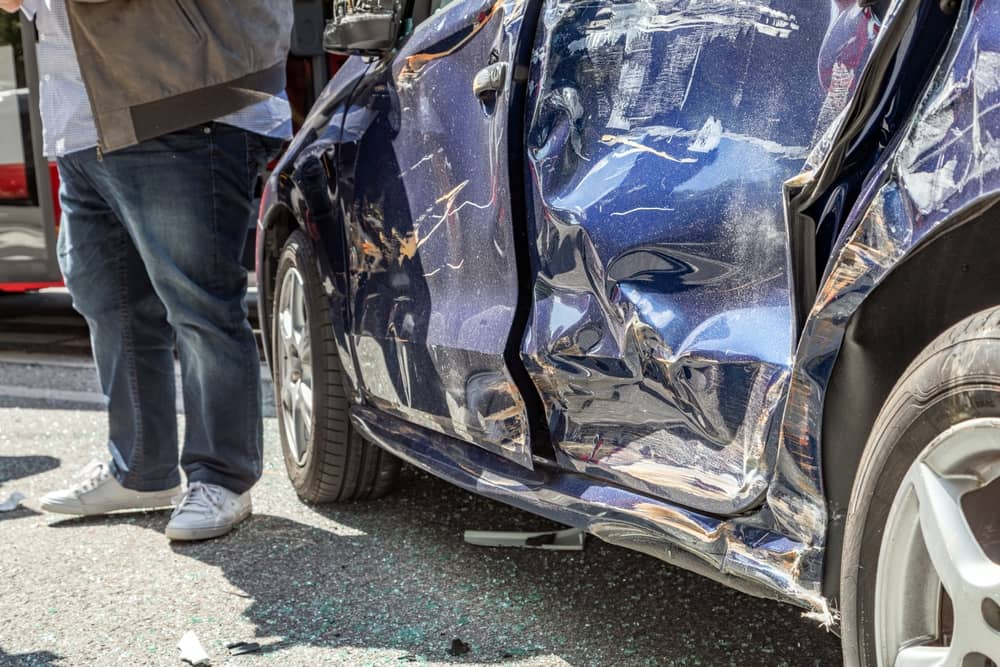Discussing the nationality of drivers involved in car accidents is a topic that must be approached with sensitivity and a commitment to accuracy. In this regard, statistics on road safety and car accidents often examine a variety of factors, including age, experience, road conditions, and driving habits, rather than nationality.
However, an analysis of motor vehicle fatality disparities by race or ethnic origin indicates that certain demographic groups can experience varying levels of risk on the road. For example, the National Safety Council has documented that non-Hispanic Black pedestrians have a higher fatality rate in traffic incidents compared to their non-Hispanic white counterparts. This is a complex issue that intersects with factors such as socioeconomic status, location, and access to safe transport.
It is important to recognize that nationalities are not a direct causative factor in accidents, and it is the behavior and circumstances of individual drivers that contribute to road safety statistics. The focus of research and policy often centers on addressing these disparities by improving safety education, infrastructure, and community engagement to reduce road traffic fatalities across all demographic groups.

Overview of Traffic Fatalities
Traffic fatalities are a critical public health concern, influenced by a complex interplay of factors, including road conditions, driver behavior, and vehicle safety. Data collection systems such as the Fatality Analysis Reporting System (FARS) are instrumental in understanding the nuances of these tragedies to inform prevention strategies.
Fatality Analysis Reporting System
FARS is a nationwide database that provides a comprehensive census of fatal traffic crashes within the United States. Managed by the National Highway Traffic Safety Administration (NHTSA), it includes detailed information on the crash circumstances, vehicle types involved, and the demographics of the persons affected. Policymakers and researchers rely on FARS to detect patterns, analyze trends, and develop traffic safety initiatives.
Traffic Fatality Rates
Traffic fatality rates are a vital metric in assessing roadway safety. Calculated as the number of fatalities per 100 million vehicle miles traveled, these rates vary significantly by demographic factors such as age, race, and ethnicity. For instance, non-Hispanic Black pedestrians have a fatality rate that is 236% higher than non-Hispanic whites. Meanwhile, various reports, such as those by the Governors Highway Safety Association, highlight disparities among different racial and ethnic groups, with Black, Indigenous, and People of Color (BIPOC) frequently experiencing higher traffic death rates. These rates are instrumental in establishing targeted safety measures and evaluating their effectiveness over time.
Common Causes Leading to Car Accidents
Car accidents can result from a wide variety of factors. Three predominant causes include instances of distracted driving, the impact of drunk driving, and the racial disparities observed in traffic incidents. Each of these factors contributes to the complex safety challenges on the road today.
Distracted Driving
Distracted driving is a leading cause of car accidents, often involving activities that divert attention from driving. Distractions can be visual, manual, or cognitive. The use of smartphones, for example, significantly increases the risk of an accident by taking the driver’s eyes off the road, hands off the steering wheel, and mind off the task of driving.
Drunk Driving
Drunk driving remains a major contributor to roadway accidents, with alcohol impairment diminishing the driver’s judgment, coordination, and reaction times. It is well-documented that driving with a blood alcohol concentration (BAC) of 0.08% or higher significantly raises the likelihood of crash involvement.
Racial Disparities in Traffic Incidents
Studies have shown that there are racial disparities in traffic fatalities, with non-Hispanic Black pedestrians experiencing higher fatality rates compared to non-Hispanic whites. These disparities might reflect a range of factors, including differences in transportation patterns, vehicle safety features, and socioeconomic conditions that influence exposure to traffic hazards.
Source: https://www.ghsa.org/resources/Analysis-of-Traffic-Fatalities-by-Race-and-Ethnicity21
Understanding Car Accident Dynamics
Understanding the factors that contribute to car accidents is essential to improving road safety and reducing the number of motor vehicle crashes. That is why we must dissect the dynamics of vehicular accidents, including how certain activities can influence the rate of traffic-related fatalities.
Motor Vehicle Crashes
Motor vehicle crashes encompass a range of incidents from minor fender-benders to multi-vehicle collisions with severe injuries or fatalities. Research shows that driver behavior, including speeding and distracted driving, plays a significant role in the occurrence of these crashes. The design and condition of road infrastructure also have a direct impact on the safety and potential for accidents on the road.
Activity and Traffic Fatalities
Traffic fatalities are unfortunately a common outcome of serious car accidents, and they can be analyzed to gain insights into their causes. The rate of traffic deaths varies significantly by demographic factors, such as age and race. For instance, Hispanic or Latino pedestrians experience a fatality rate 84% higher than non-Hispanic whites, and this statistic underscores the importance of customized safety measures for different communities. Additionally, the type of activity engaged in by road users, whether as drivers, passengers, or pedestrians, influences exposure and risk levels, translating to the varied incidence of fatalities across different groups.
Comparative Analysis of Accident Causes
The following segment delves into the specifics of traffic accidents, identifying which nationalities are statistically more involved in such incidents and examining the conclusive data derived from various studies.
Most Car Accidents
Recent analyses have shown that when observing the frequency of car accidents, certain demographics appear more frequently in crash statistics. However, it is crucial to handle this data sensitively and acknowledge that numerous factors contribute to these statistics, including but not limited to socioeconomic influences, location, and access to driver education.
For example, the fact that reports suggest that Hispanic or Latino pedestrians experience a fatality rate 84% higher than non-Hispanic whites indicates a disparity that extends beyond solely driving behaviors.
Analysis Suggests
The analysis conducted in various studies suggests that nationalities alone are not predictive of driving abilities or the likelihood to cause accidents. Instead, systemic factors such as road conditions, enforcement of traffic laws, and availability of safe vehicles are influential. For instance, the GHSA’s report details how traffic crash fatalities disproportionately affect Black, Indigenous, and People of Color (BIPOC), highlighting broader societal issues that contribute to these discrepancies. It is, therefore, reductive to label any nationality as worse drivers; instead, it is the intersection of various factors that often dictate the unfortunate trend seen in the statistics.
Health Implications of Car Accidents
Car accidents can have significant health implications for both the individuals involved and the broader community. Understanding these impacts helps in developing strategies to improve health outcomes and realize potential environmental health benefits.
Improve Health Outcomes
After a car accident, immediate and effective medical intervention can be the difference between life and death, significantly improving health outcomes for the injured. Organizations such as the Centers for Disease Control and Prevention report on emergency department visits, highlighting the critical nature of prompt medical care and rehabilitation services. These services not only save lives but also reduce long-term disabilities. Improved road safety measures and vehicle designs enhance the survivability of crashes, thus contributing to better health outcomes.
Environmental Health Benefits
Reducing car accidents has indirect yet notable environmental health benefits. Every accident averted means potential pollutants, from vehicle fluids to damaged car parts, do not contaminate the environment. Additionally, fewer accidents can lead to less congestion on roads, which in turn reduces fuel consumption and lowers vehicular emissions. A sustained decrease in accidents contributes to cleaner air and a healthier community.
Role of Transportation System
A nation’s transportation system plays a significant role in the occurrence and severity of car accidents. The design and maintenance of road infrastructure, for instance, can greatly affect driver safety. Poorly maintained roads may result in hazardous driving conditions that contribute to accidents. Consequently, a transportation system that prioritizes regular upkeep and prompt repairs can help minimize these risks.
In terms of road design, features such as clear signage, well-marked lanes, and the presence of guardrails can make a profound difference. These elements aid drivers in making informed decisions and provide a margin of safety should a driver make an error. The absence of these features has been linked to an increase in vehicular incidents.
Furthermore, the transportation system includes traffic control measures which are vital for order and safety. Effective traffic signal systems and enforcement of traffic laws are essential components that manage vehicle flow and behavior. This enforcement helps to mitigate accidents caused by speeding, running red lights, and other forms of dangerous driving.
The availability and quality of public transportation options also influence the number of cars on the road. A reliable and efficient public transit network can reduce the need for personal vehicles, thereby decreasing the likelihood of traffic congestion and potential accidents. Each component of the transportation system is interconnected. They must collectively function seamlessly to ensure optimal safety for all road users.
Impact of Traffic Incidents on Vulnerable Groups
Traffic incidents disproportionately affect certain communities, with data illustrating that cycling and pedestrian deaths showcase significant racial and ethnic disparities. These vulnerable groups experience a higher rate of fatalities in traffic incidents due to a variety of contributing factors.
Pedestrian Deaths
Comparisons of fatality rates reveal that Non-Hispanic Black pedestrians are subjected to a fatality rate 236% higher than non-Hispanic whites. This alarming statistic may be influenced by elements like infrastructure availability, urban planning, and access to safe pedestrian spaces. Traffic safety interventions are essential to address these disparities and provide equitable road safety.
Cycling Fatalities
Cyclists from minority backgrounds also encounter a greater risk on the roadways. The lack of protected cycling lanes and traffic calming measures in certain areas can be a contributing factor to the increased fatalities among these groups. By focusing on improved cycling infrastructure and targeted safety programs, cities can work toward reducing these preventable tragedies.
Evaluating Risk and Prevention
In assessing car accident data, it becomes essential to consider the metrics related to fatality risk, understanding its implications for targeted prevention strategies.
Fatality Risk
Traffic crash fatalities reveal important disparities among different racial and ethnic groups, indicating a higher fatality risk for some nationalities. The Governors Highway Safety Association has provided a detailed analysis showing that traffic crash fatalities disproportionately affect Black, Indigenous, and People of Color (BIPOC). Studies highlight that non-Hispanic Black pedestrians experience a fatality rate significantly higher than non-Hispanic whites.
Data also suggest that socioeconomic factors play a role in these statistics, which might help explain the variation in fatality risk by nationality. For instance, the Harvard T.H. Chan School of Public Health reports that Black Americans have higher traffic death rates per mile walked and nearly twice the rate per mile driven or ridden in a car compared to White Americans.
When developing prevention measures, such data underscores the necessity for tailored safety education and community outreach programs that address the specific needs and risks associated with different nationalities. It also emphasizes the importance of equitable enforcement of traffic laws to ensure the safety of all road users.
Legislation and Car Accident Prevention
Legislative measures play a crucial role in car accident prevention. Countries often tackle this challenge by enacting traffic laws designed to minimize risk factors and enhance vehicle safety. These measures serve to decrease the number of traffic collisions and deter driving behaviors that lead to accidents.
Speed Limits: Strict enforcement of speed limits is one of the most effective strategies. Research shows that reducing speed limits, especially in urban areas, can significantly lower the severity and frequency of accidents.
Seat Belt Laws: Legislation mandating the use of seat belts has been shown to reduce fatalities and serious injuries in car crashes. A universally accepted best practice, seat belt usage is often promoted through public safety campaigns in addition to legal requirements.
DUI Laws: Driving under the influence (DUI) laws aim to prevent accidents caused by impaired drivers. These regulations include harsh penalties for offenders as a deterrent.
Distracted Driving: Laws that prohibit the use of mobile phones and other distracting devices while driving seek to maintain driver focus on the road.
Vehicle Safety Standards:
- Airbags
- Anti-lock Braking Systems (ABS)
- Electronic Stability Control (ESC)
These safety features are often mandated by law for new vehicles.
Finally, our country and even Illinois itself continue to innovate in traffic law enforcement, including the use of automated speed cameras and sobriety checkpoints, to ensure compliance with road safety laws. These interventions, when consistently applied, have a marked effect on improving road safety and reducing car accidents.
Technological Advances in Vehicle Safety
The landscape of vehicle safety has undergone significant transformation due to technological advancements aimed at reducing traffic fatalities. Innovations such as advanced driver-assistance systems (ADAS) have become critical in enhancing driving safety. These systems encompass features like automatic emergency braking, adaptive cruise control, and lane departure warnings, which mitigate the risks of collisions by assisting drivers in recognizing potential hazards and responding promptly.
Vehicles today are often equipped with Electronic Stability Control (ESC), which detects and reduces loss of traction, preventing the vehicle from skidding. Another milestone is the introduction of airbags, which now include side-impact and knee airbags, in addition to the traditional front airbags.
The emergence of smart car technologies has seen the integration of sensors and cameras that provide a 360-degree view around the vehicle. These components facilitate park assist systems and rear-view cameras that greatly reduce the likelihood of parking-related incidents.
Safety enhancements also include vehicle-to-everything (V2X) communication. This system allows vehicles to communicate with each other and with road infrastructure, conveying real-time information about road conditions, thus enabling preemptive safety measures.
These safety technologies have played a pivotal role in decreasing accident rates and severity. Continued innovation and refinement of vehicle safety mechanisms are crucial for the advancement of road safety. Indeed, organizations such as the National Highway Traffic Safety Administration have been key contributors to the setting and enforcing of these vital safety standards.
Global Perspectives on Traffic Safety
Traffic safety remains a significant global issue, with various factors influencing the rate and severity of accidents around the world. Legislation and enforcement play crucial roles. Countries with stringent road safety laws, like those governing speed limits and the use of seat belts, typically experience fewer traffic fatalities. Comprehensive data on the global scale of road traffic deaths is highlighted in a report by the World Health Organization (WHO).
Regional Differences
Traffic safety is a multifaceted issue influenced by legal, cultural, and socioeconomic factors, calling for global cooperation to improve conditions and outcomes. Nearly 1.35 million people globally are impacted by traffic accidents annually. Low and middle-income countries have a disproportionate rate of road traffic injury mortality. Different regions exhibit diverse challenges relating to road safety. Developed nations often have better infrastructure and enforcement, contributing to lower accident rates. Developing countries may struggle with high rates of traffic-related deaths due to factors such as insufficient road infrastructure and inadequate vehicle standards.
Globally, pedestrians, cyclists, and motorcyclists are at higher risk. Road safety campaigns aim to protect these groups particularly.
Research also suggests disparities exist among different races and ethnicities in traffic-related fatalities. An analysis by the Governors Highway Safety Association sheds light on these disparities, revealing variances in fatality rates across different groups, which could be linked to socioeconomic factors and access to safe transport.
Contact 844 See Mike After a Car Accident
If you’ve recently been in any type of car accident, whether you were a driver, cyclist, or pedestrian, it will greatly benefit you to contact a Chicago personal injury lawyer.
844 See Mike has a team of dedicated attorneys ready to take on your case and ensure you get the compensation you deserve in order to move forward from the accident, emotionally and financially.




